What is Shio Lemon Yakisoba?
Yakisoba is a popular Japanese stir-fry dish made with ramen-style noodles, meat, and vegetables. It’s a versatile dish with endless possibilities when it comes to customization, but the two most common types are “Sauce Yakisoba” and “Shio Yakisoba.”
The standard “sauce” version is made with pork and cooked in a savory and tangy yakisoba sauce flavored with a range of condiments including Worcestershire sauce, soy sauce, and oyster sauce.
On the other hand, “shio-yakisoba” is simply seasoned with salt and pepper, allowing you to customize with additional flavors. The ingredients and seasonings used vary depending on the family, shop, and region.
As some of you may know, Yakisoba is a classic Japanese street food and because it’s a quick and easy dish to prepare outside, you can often find yakisoba food stands at outdoor occasions such as festivals, sports day, fireworks festivals, and cherry blossom festivals. It is also a must-have dish at teppanyaki restaurants, where it can be cooked on an iron griddle alongside okonomiyaki and other teppan dishes.
This Shio Lemon Yakisoba is a zesty and refreshing take on shio-yakisoba, using the bright flavors of lemon to compliment the fresh shrimp and crunchy vegetables. It’s quick to make and full of flavor, and I especially enjoy this dish in the summer!
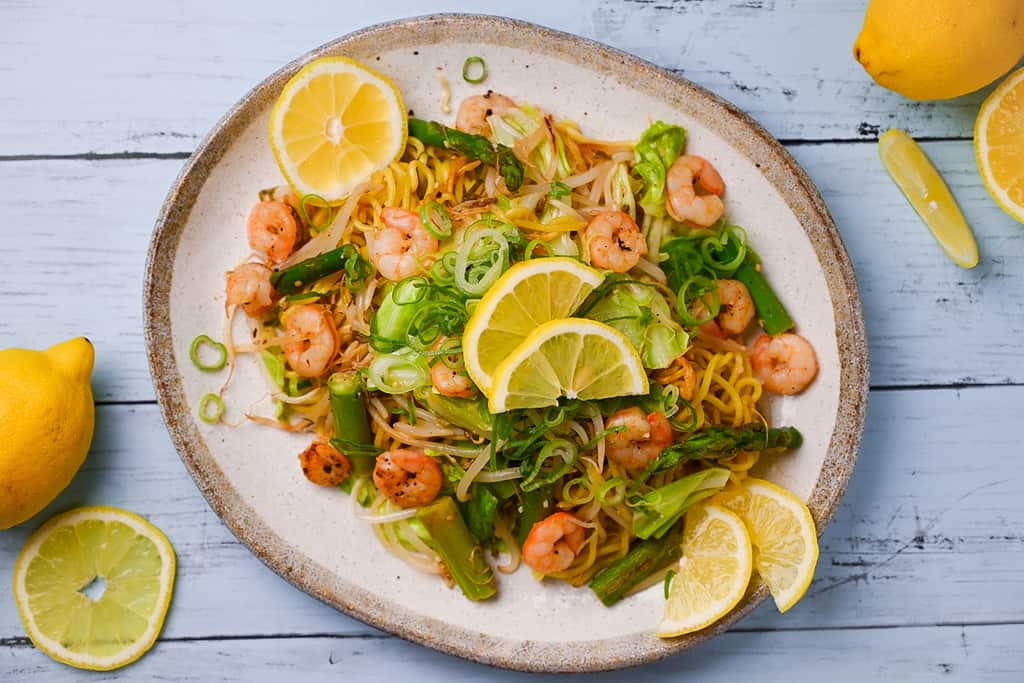

How I Developed This Recipe
I came up with this shio yakisoba recipe after trying a similar dish at a teppanyaki restaurant.
This salt-based yakisoba is a little different. It’s got lemon in it to give it a nice fresh taste, and it’s paired with seafood, which goes really well with the flavors.
This recipe offers a tasty new take on the classic sauce yakisoba. I think you’ll really enjoy this recipe!
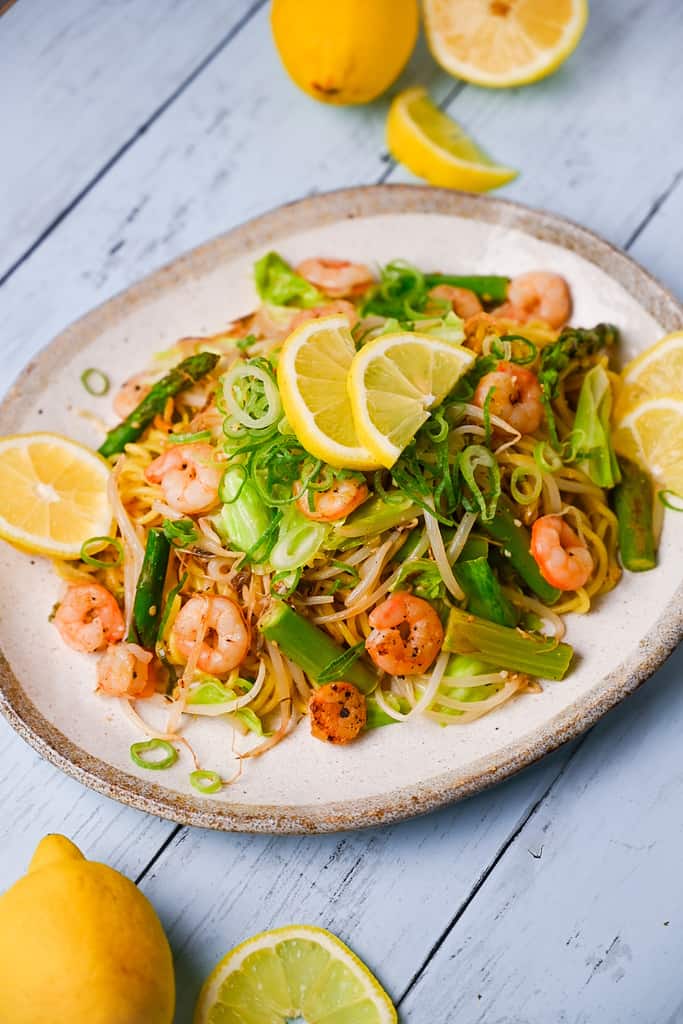
Visual Walkthrough & Tips
Here are my step-by-step instructions for how to make Shio Lemon Yakisoba at home. For ingredient quantities and simplified instructions, scroll down for the Printable Recipe Card below.
Take a small bowl and add lemon juice, lemon zest, salt, pepper, sugar, soy sauce, sake, grated garlic, sesame oil, Chinese chicken bouillon powder, sesame seeds and chopped green onion. Mix thoroughly and set aside for later.
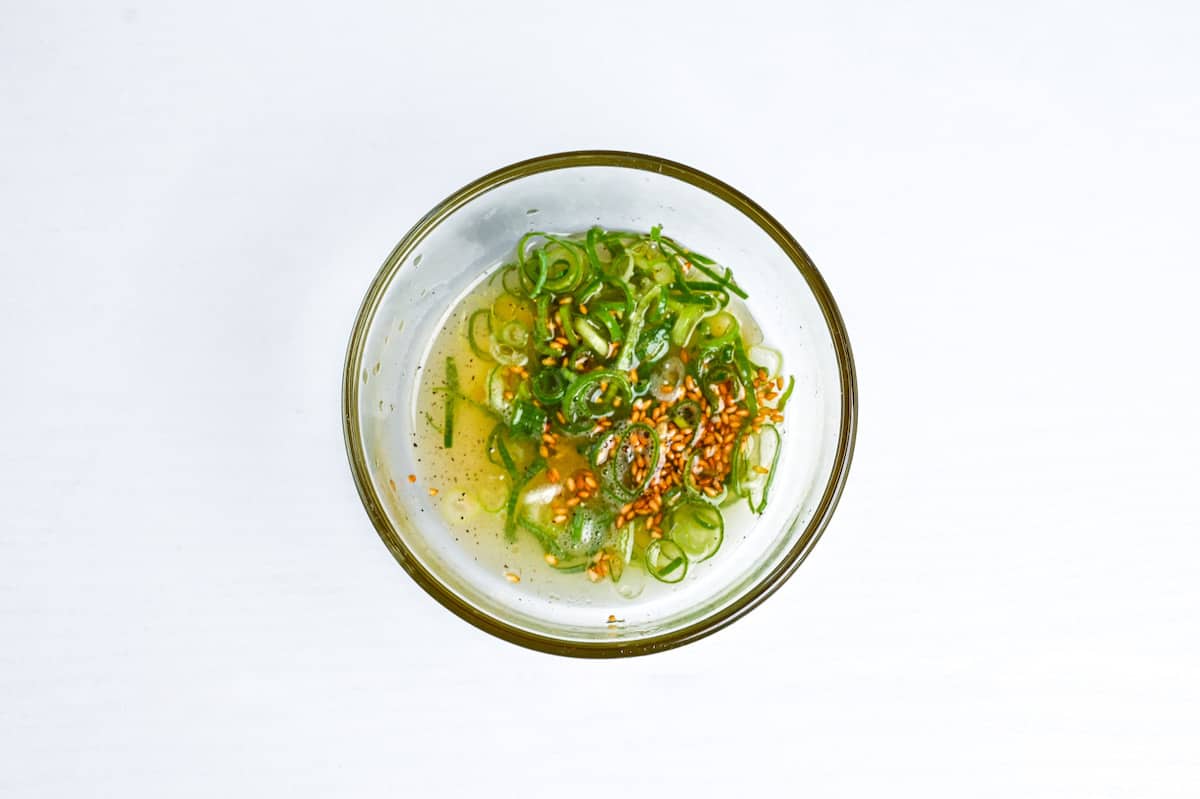
Fill a bowl with cold water and add the beansprouts with a couple of pinches of salt. This step not only cleans the beansprouts but improves the texture.
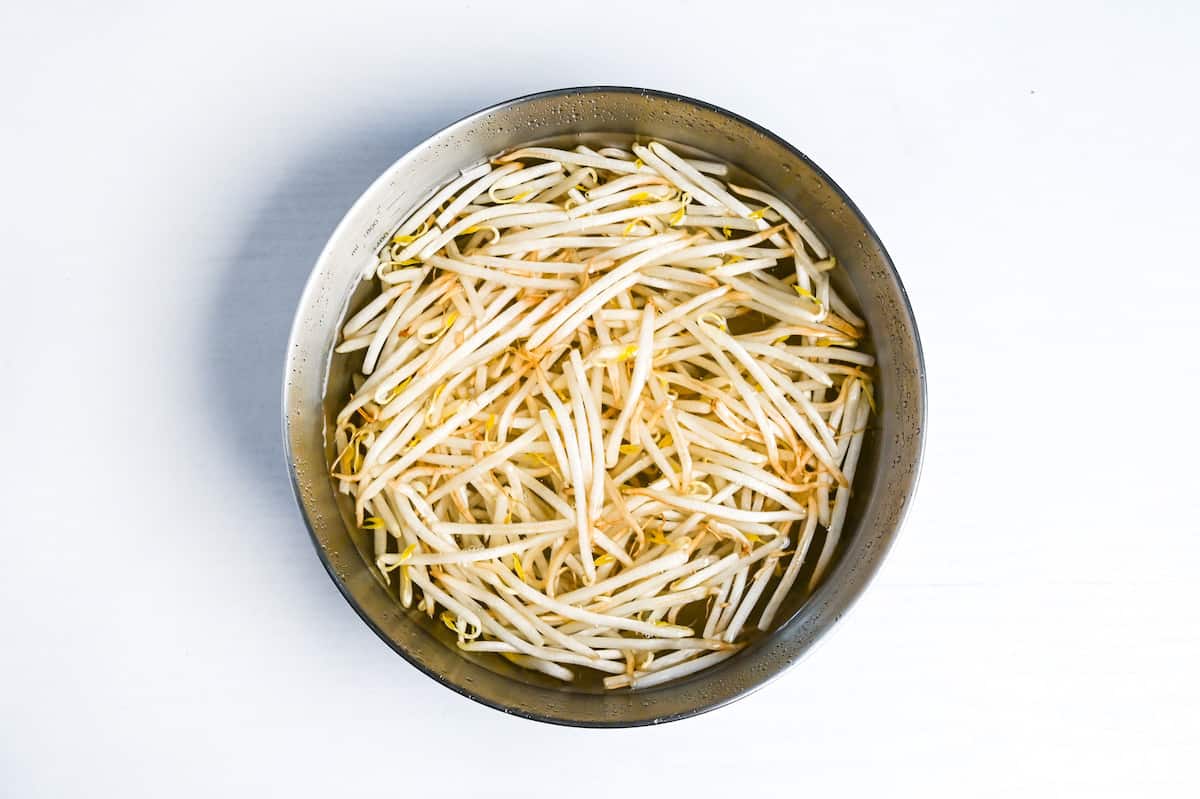
Deshell and devein the shrimp, then place them in a bowl and rub the surface with cornstarch and salt. Once fully covered, rinse thoroughly with cold water and pat them dry.
Heat a large pan or wok on medium-high and add a drizzle of sesame oil. Add your noodles and fry until lightly crispy on both sides.

If you’re using dry ramen noodles, boil them for a few minutes less than the time stated on the packaging and drain thoroughly before frying. You might want to let them air dry for a few minutes before adding them to the pan to prevent the moisture from creating steam that will make the noodles soggy.
Once lightly crispy, remove them from the pan and set aside for later.
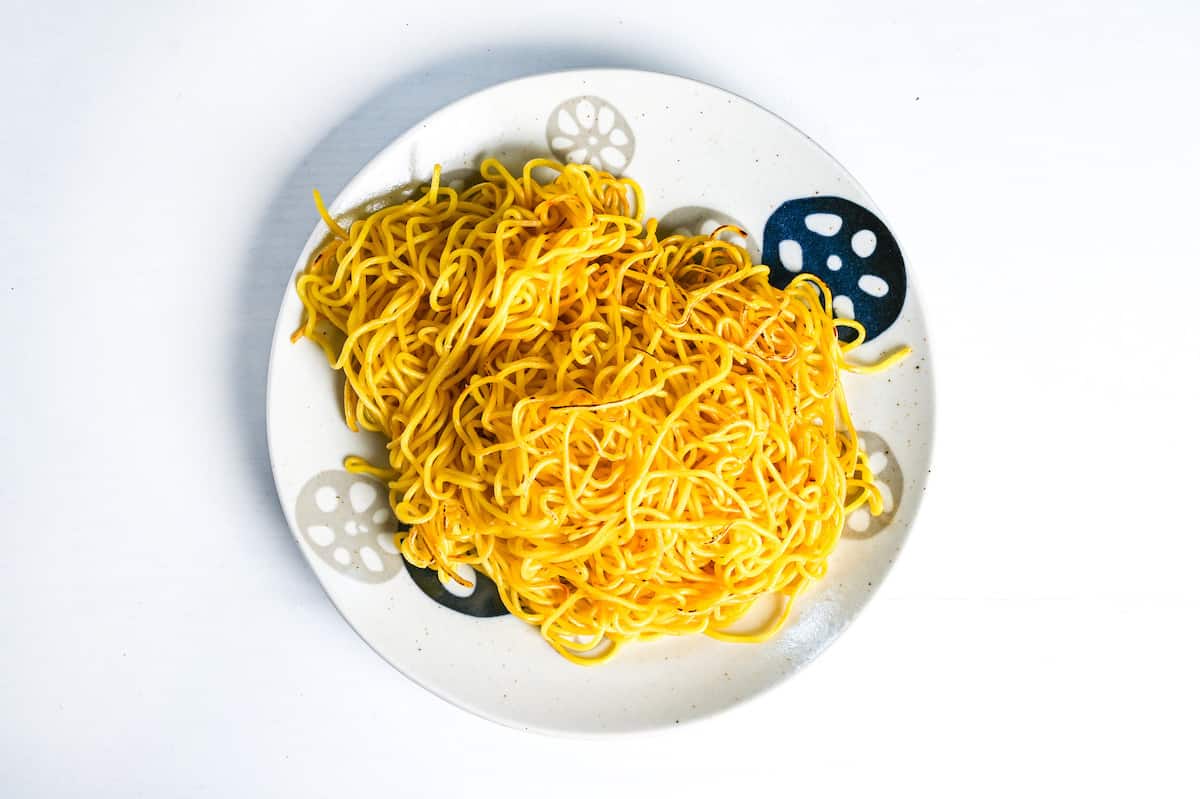
In the same pan, pour a little extra sesame oil and then add the shrimp and asparagus. Sprinkle with salt and pepper and stir-fry until cooked through.
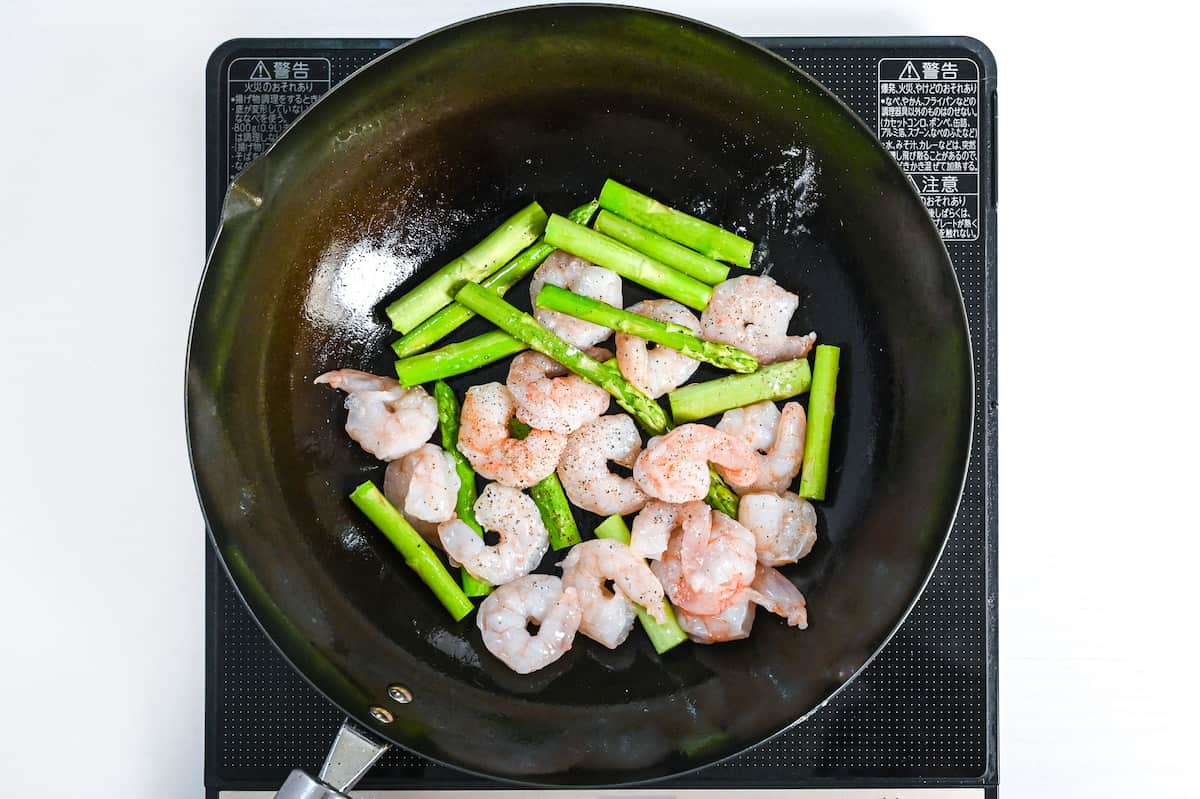
Return the noodles to the pan and mix thoroughly to break them apart.
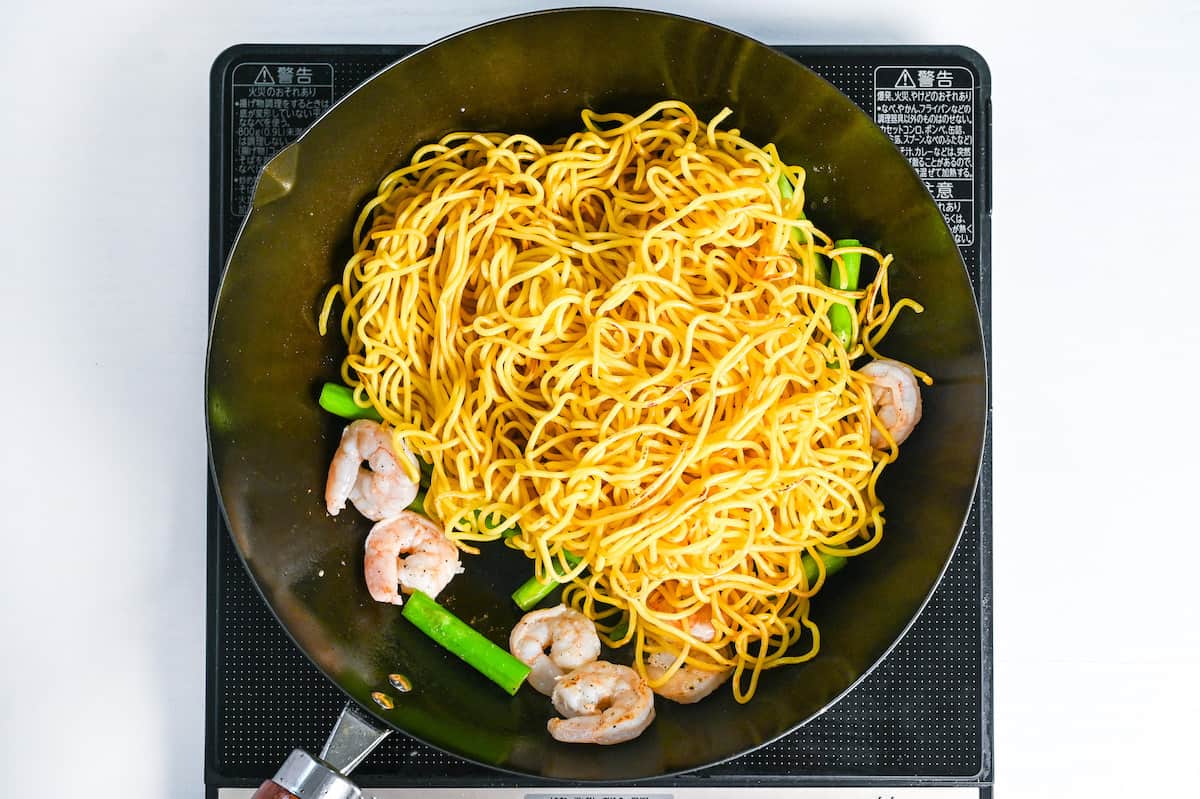
Push the noodles, shrimp and asparagus to one side to make space in the pan. Drain the beansprouts and place them in the empty space.
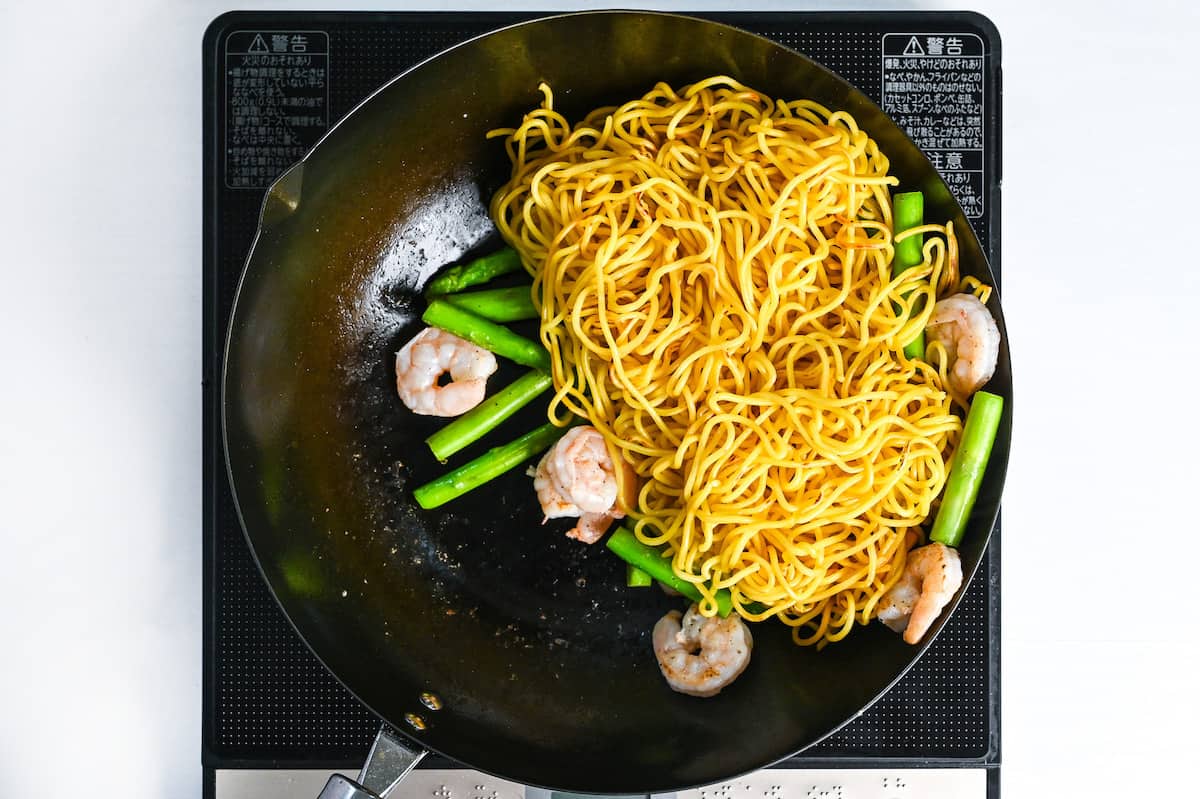
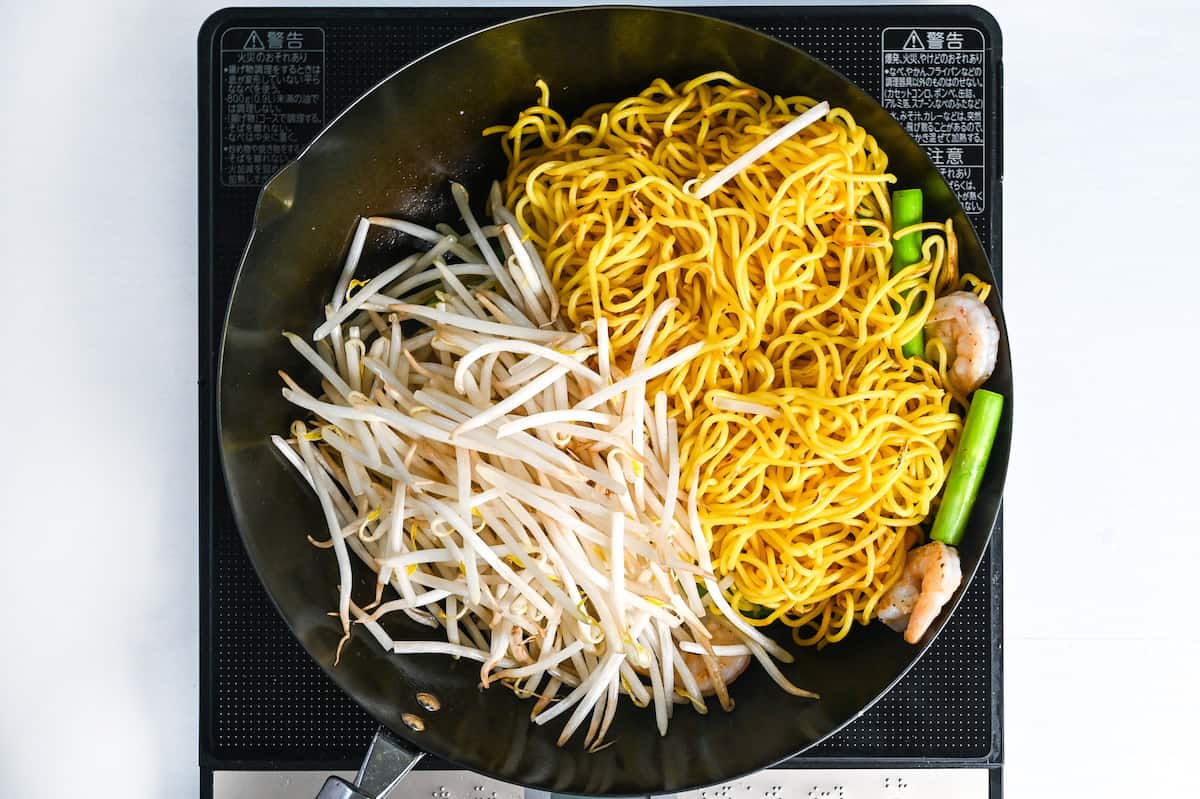
Place the cabbage on top of the beansprouts, then move the noodles on top of the cabbage. These layers will allow the beansprouts to steam at the bottom and cook the cabbage in the middle without overcooking the noodles.
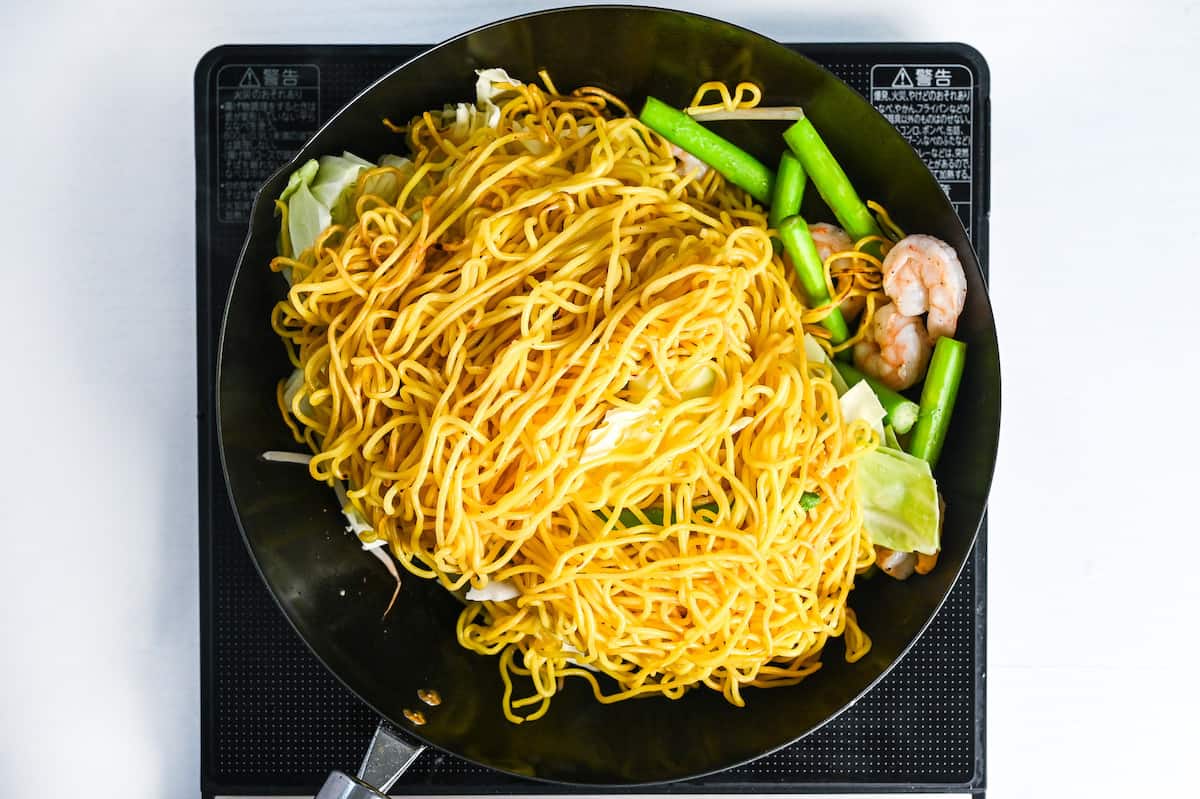
Move the shrimp and asparagus to the top to prevent burning, and cook until the beansprouts and cabbage are slightly softened.
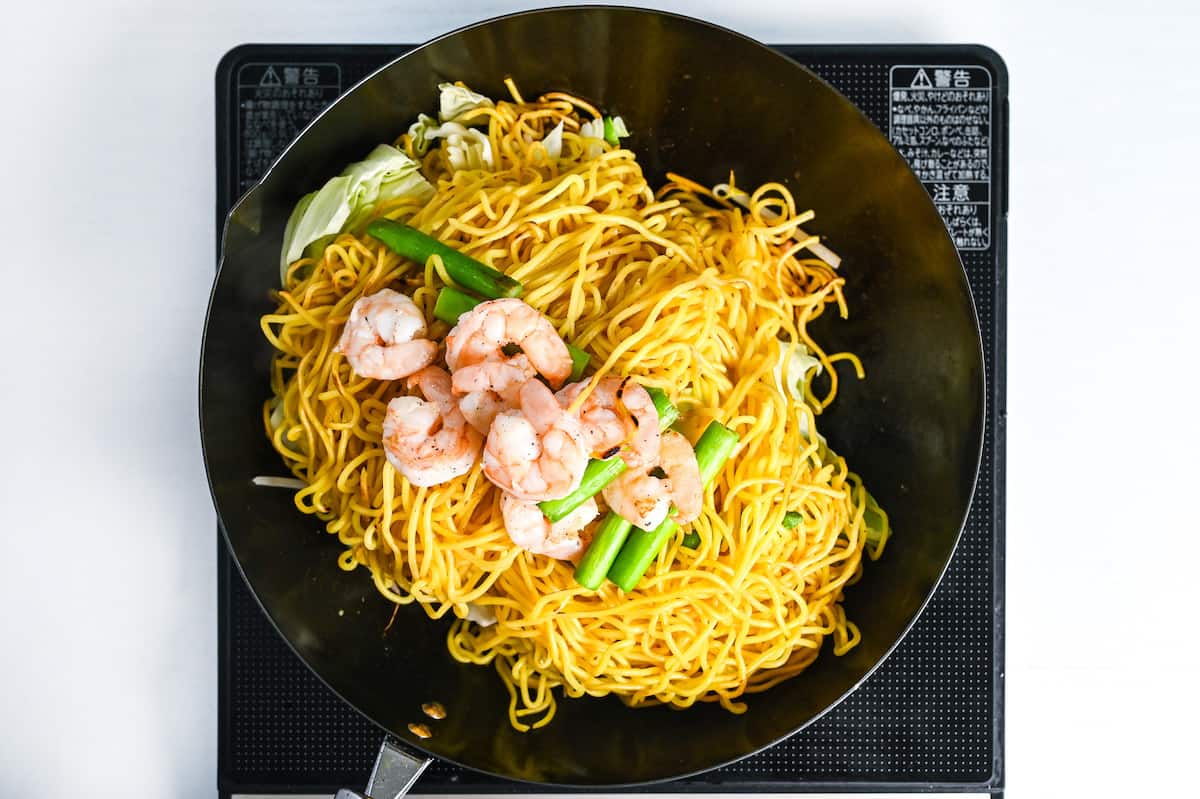
Pour the lemon sauce around the pan and turn up the heat to high. Stir fry for about 1 minute (to burn off the alcohol in the sake) and mix thoroughly until all the ingredients are evenly distributed.
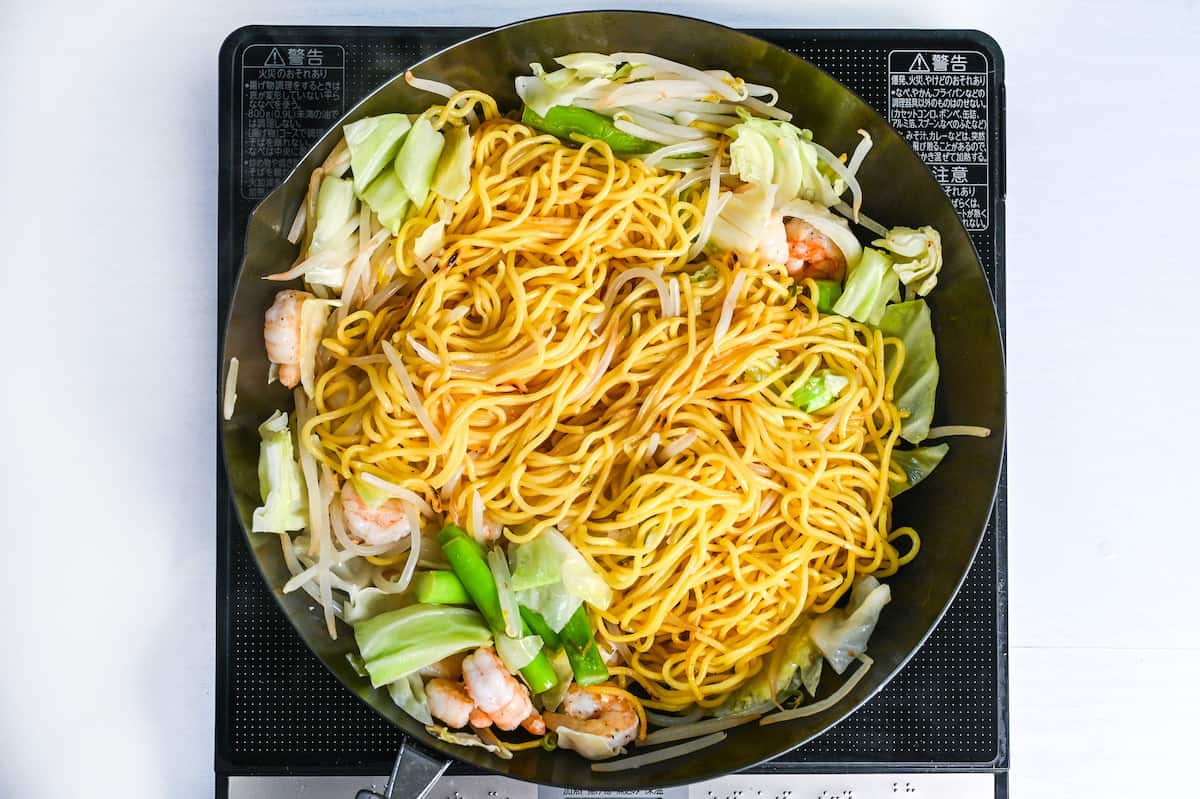
Transfer to serving plates and sprinkle with chopped green onion (optional).
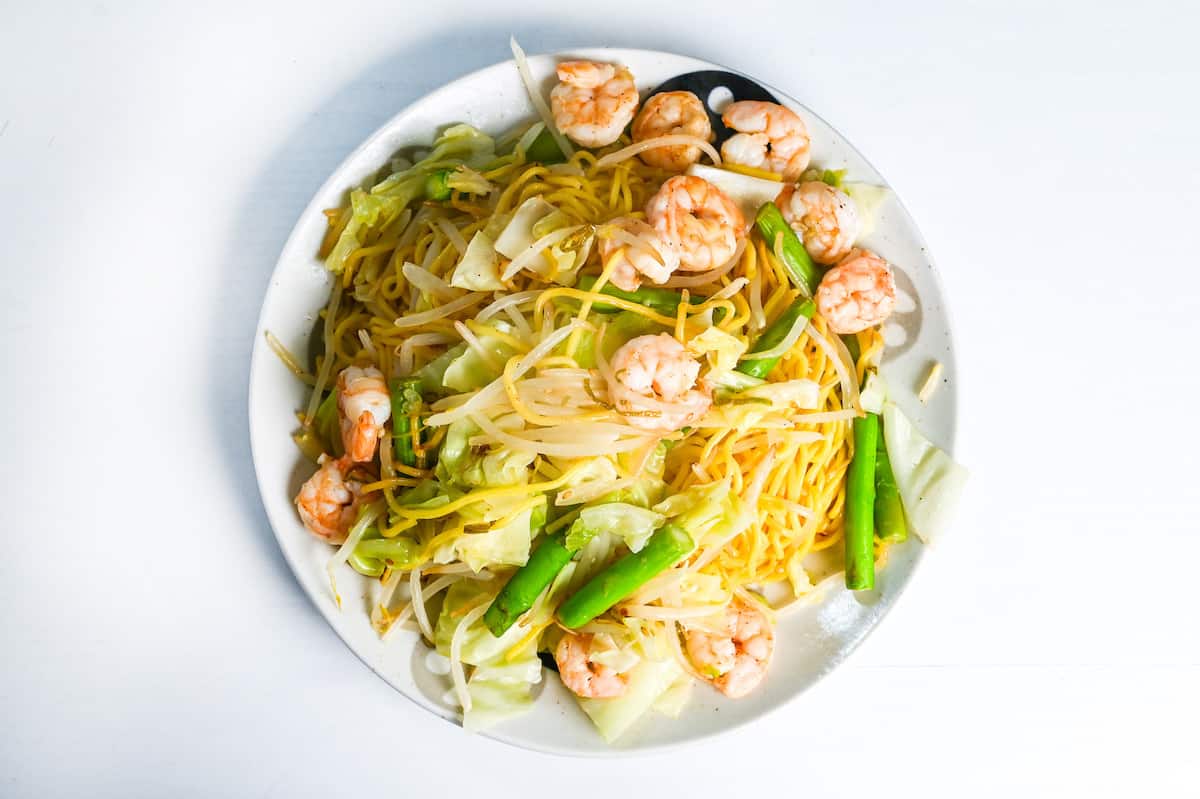
Enjoy!
Jump to Full Recipe MeasurementsHow to Store
Yakisoba can be both refrigerated or frozen. To store, it is ideal to wrap it or place it in an airtight container to prevent the noodles from drying out.
Since yakisoba contains many ingredients, it is not recommended to keep it for more than 2 days in the fridge. If you don’t plan to eat it by the next day, freezing is preferred and can be kept for up to 2 months. Divide into individual portions for convenience.
To reheat, simply microwave until piping hot. You can also defrost in the microwave.
Storage summary
Room temperature – Not recommended. For bento, use an icepack and insulated lunch bag and consume within 2 hours in summer or 4 hours in winter.
Refrigerated – Up to 2 days.
Frozen – Up to 2 months.
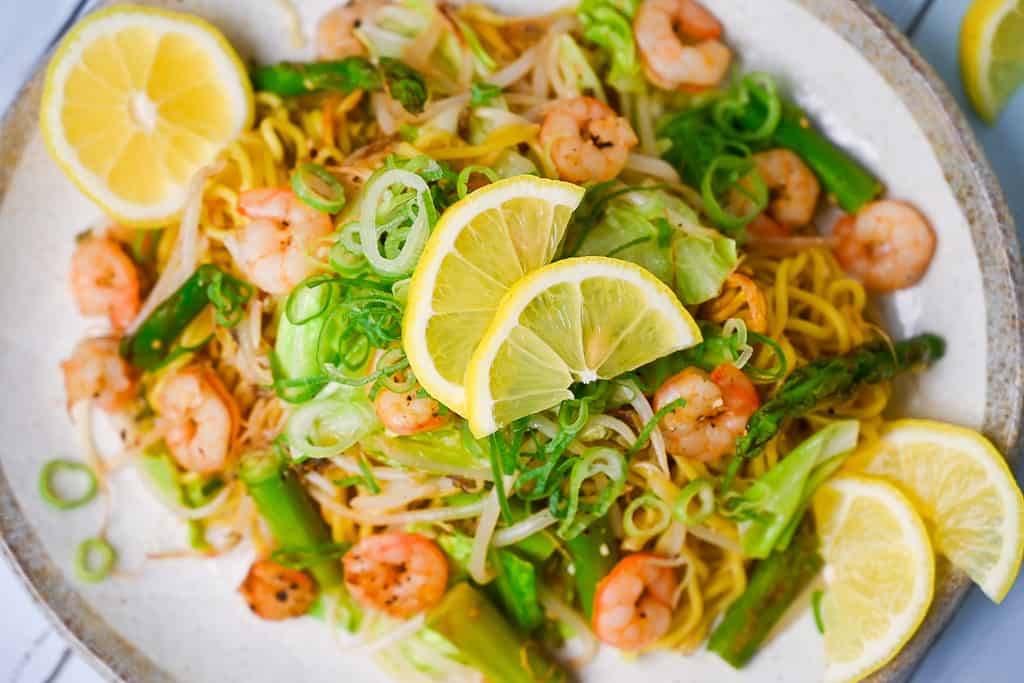
I hope you enjoy this Shio Lemon Yakisoba recipe! If you try it out, I’d really appreciate it if you could spare a moment to let me know what you thought by giving a review and star rating in the comments below. It’s also helpful to share any adjustments you made to the recipe with our other readers. Thank you!
More Japanese Stir-fry Recipes
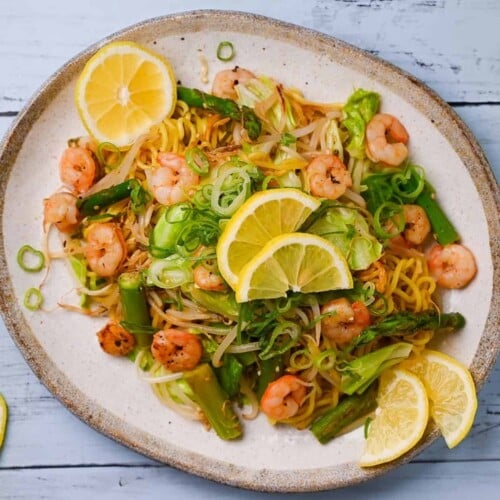
Shio Lemon Seafood Yakisoba
Ingredients
Shio Yakisoba Sauce
- ½ lemon zest and juice
- 1 tbsp sake
- 1 tsp toasted sesame oil
- 1 tsp Chinese-style chicken bouillon powder
- 1 tsp toasted white sesame seeds
- ½ tsp salt
- ½ tsp grated garlic or garlic paste
- ¼ tsp sugar
- 1 pinch ground black pepper
- 1 dash Japanese soy sauce (koikuchi shoyu)
- 1 tbsp finely chopped green onions
Shrimp
- 200 g shrimp deshelled and deviened
- 1 tsp cornstarch for cleaning
- 2 pinches salt for cleaning
Beansprouts
- 100 g bean sprouts
- cold water for soaking
- 2 pinches salt
Shio Lemon Yakisoba
- 1 tsp cooking oil
- 200 g yakisoba noodles (pre-steamed) chukamen, yakisoba noodles
- 1 pinch salt and pepper
- 2 stalks asparagus cut into bitezie pieces
- 50 g green cabbage (green or pointed) cut into bitesize pieces
- toasted sesame oil
- finely chopped green onions to garnish
My recommended brands of ingredients and seasonings can be found in my Japanese pantry guide.
Can’t find certain Japanese ingredients? See my substitution guide here.
Instructions
- First, take a small bowl and add all of the sauce ingredients (zest and juice of ½ lemon, 1 tbsp sake, 1 tsp toasted sesame oil, 1 tsp Chinese-style chicken bouillon powder, 1 tsp toasted white sesame seeds, ½ tsp salt, ½ tsp grated garlic, ¼ tsp sugar, 1 pinch ground black pepper, 1 dash Japanese soy sauce (koikuchi shoyu) and 1 tbsp finely chopped green onions.) Mix thoroughly and set aside for later.

- Next, place 100 g bean sprouts into a bowl of cold water and add 2 pinches salt. Soak until it's time to cook.

- Place 200 g shrimp in a bowl and rub 1 tsp cornstarch and 2 pinches salt over the surface. Rinse them with cold water and dry them with kitchen paper, then set aside for later.

- Heat a large pan or wok on medium-high and add 1 tsp cooking oil. Once hot, add 200 g yakisoba noodles (pre-steamed) to the pan and fry until lightly crispy on both sides.

- Transfer the noodles to a plate and set aside for later.

- Reuse the pan and add more oil if necessary. Add the shrimp and 2 stalks asparagus. Sprinkle them with 1 pinch salt and pepper and fry until the shrimps are cooked through.

- Add the noodles back to the pan and mix them a little to help break them apart if they became stuck together.

- Push the noodles to one side to make space in the pan.

- Add the beansprouts to the empty space and lay 50 g green cabbage on top.

- Place the noodles on the top of the cabbage. The beansprouts will cook at the bottom of the pan while the cabbage steams in the middle.

- As it cooks, move the shrimp and asparagus to the top of the noodles to stop them from burning.

- When the beansprouts and cabbage are slightly softened (about 2 minutes later) turn up the heat to high and drizzle the lemon salt sauce around the pan. Mix until well incorporated.

- Serve up and garnish with a drizzle of toasted sesame oil and finely chopped green onions!

- Enjoy!
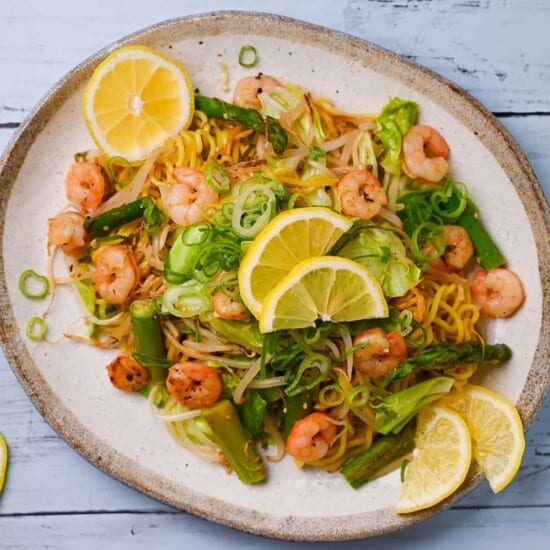



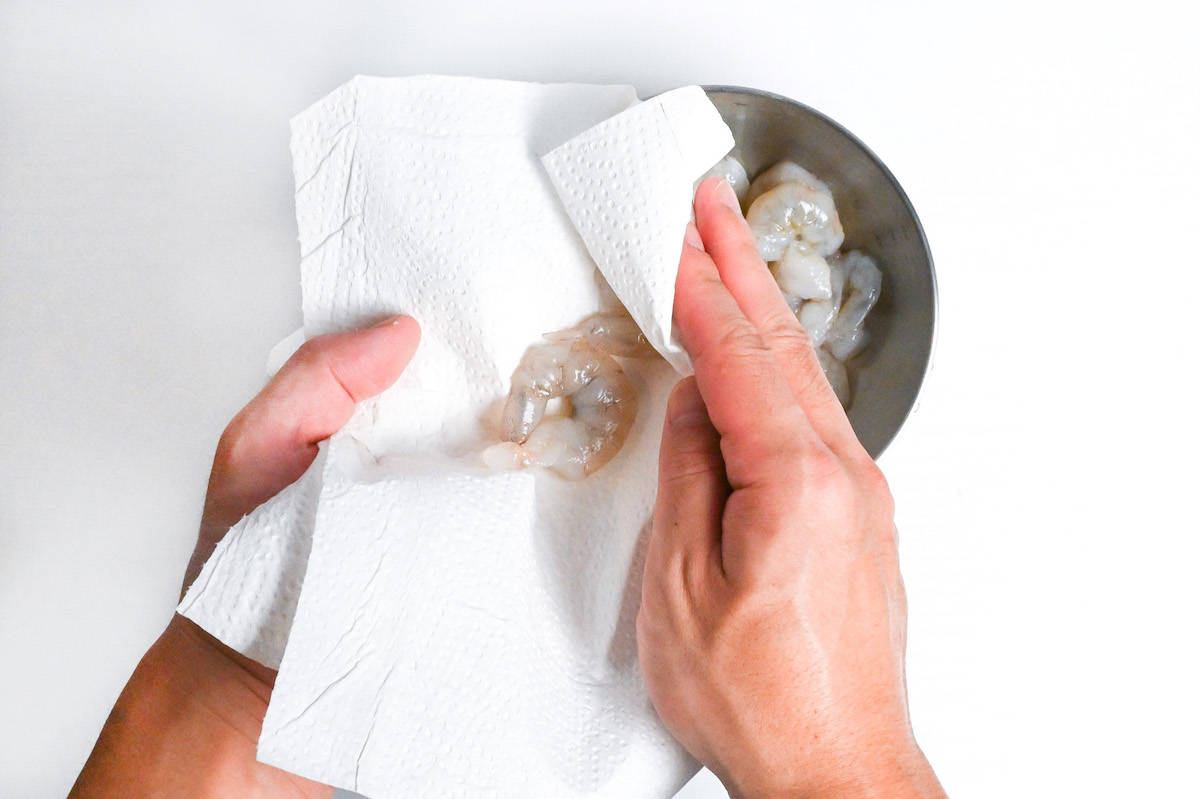
Leave a rating and a comment